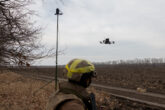September 22, 2021
All About Access: Solving America’s Force Posture Puzzle
The Biden administration has promised to revise US global force posture and alter the vast constellation of overseas forces, bases, and capabilities that underpin America’s ability to deter adversaries, counter threats, and protect allies. It has signaled an intent to reduce US presence in the Middle East to make it more commensurate with the region’s relative strategic importance (i.e., “rightsize” forces) and bolster its posture in the Indo-Pacific, much like previous administrations attempted to do. To this end, the administration has a Global Force Posture Review underway and has already drawn down US combat forces in Afghanistan, effectively ending the almost 20-year US presence in the country.
This impulse to remake the US global footprint reflects a desire to address a new era of strategic competition with China and to expend finite resources and taxpayer dollars more efficiently. It is not the first push to revise US force posture. The Trump administration also attempted to make changes, including controversial plans to draw down forces in South Korea and Germany, while simultaneously seeking to stand up a new base and enhance US troop numbers in Poland. Such moves were, in theory, intended to correct US global posture to be more in line with the Department of Defense’s refocus on preparing for a future conflict with China and Russia.
This impulse to remake the US global footprint reflects a desire to address a new era of strategic competition with China and to expend finite resources and taxpayer dollars more efficiently.
Both the Trump and Biden administrations’ attempts to change posture have prompted extensive debate over how the United States should secure its global interests using military power. Advocates of restraint, or “offshore balancing,” have called for dramatic cuts to US military presence in most theaters, arguing that the costs of forward-based forces outweigh the purported benefits and that “over-the-horizon” air and naval forces are sufficient. Critics of offshore balancing, on the other hand, argue that forward-based forces serve a vital role in deterring adversaries and that “both US influence and international stability are thoroughly interwoven with a robust US forward presence.” Yet, even proponents of forward presence recognize that the current arrangement of forces is unlikely to adequately meet emergent US security needs. On one point there is agreement between the two camps: almost no one is happy with the status quo.
The posture review currently underway has major implications for US grand strategy. Forward presence has historically served three fundamental objectives: to deter adversaries from dominating regions of vital interest to the United States; to bolster US ability to defend its interests and allies; and to reassure allies that the United States is, in fact, committed to their defense. These objectives remain relevant today, but current forms of posture are increasingly vulnerable to physical contestation as great-power adversaries enhance their military capabilities and operational concepts. Moreover, states hosting US forces and bases are also vulnerable to political and economic coercion, which could have implications for US posture. Future efforts must therefore focus on achieving a resilient, combat-credible force posture. But as previous administrations have sought to make changes to relatively stagnant US global posture and failed, what could make the Biden administration’s attempt to revise posture successful?
Read the full article from The Washington Quarterly.
More from CNAS
-
Defense / Transatlantic Security
When Defense Becomes Destruction: Austria-Hungary’s Mistake and Ukraine’s RiskThis article was originally posted on War on the Rocks. The southeastern Polish city of Przemyśl, with its elegant 19th century Habsburg-era train station, remains one of the ...
By Franz-Stefan Gady
-
Defense / Transatlantic Security
Ukraine’s Catch-22 MomentThis article was originally published in the Financial Times. In Joseph Heller’s wartime classic, Catch-22, the protagonist Yossarian seeks out the US army surgeon Doc Daneeka...
By Franz-Stefan Gady
-
CNAS Insights | Budgetary Own Goals Undermine “Speed and Volume”
On November 7, Secretary of Defense Pete Hegseth laid out a plan to overhaul the Department of Defense’s (DOD’s) acquisition system. Placing an emphasis on delivering new capa...
By Philip Sheers, Carlton Haelig & Stacie Pettyjohn
-
Drones: Who Is Making the New Weapons of War?
From Ukraine and Russia to Gaza and Sudan, drones have become a key weapon of war. Which companies are making them, and profiting from this rapidly expanding but controversial...
By Stacie Pettyjohn




